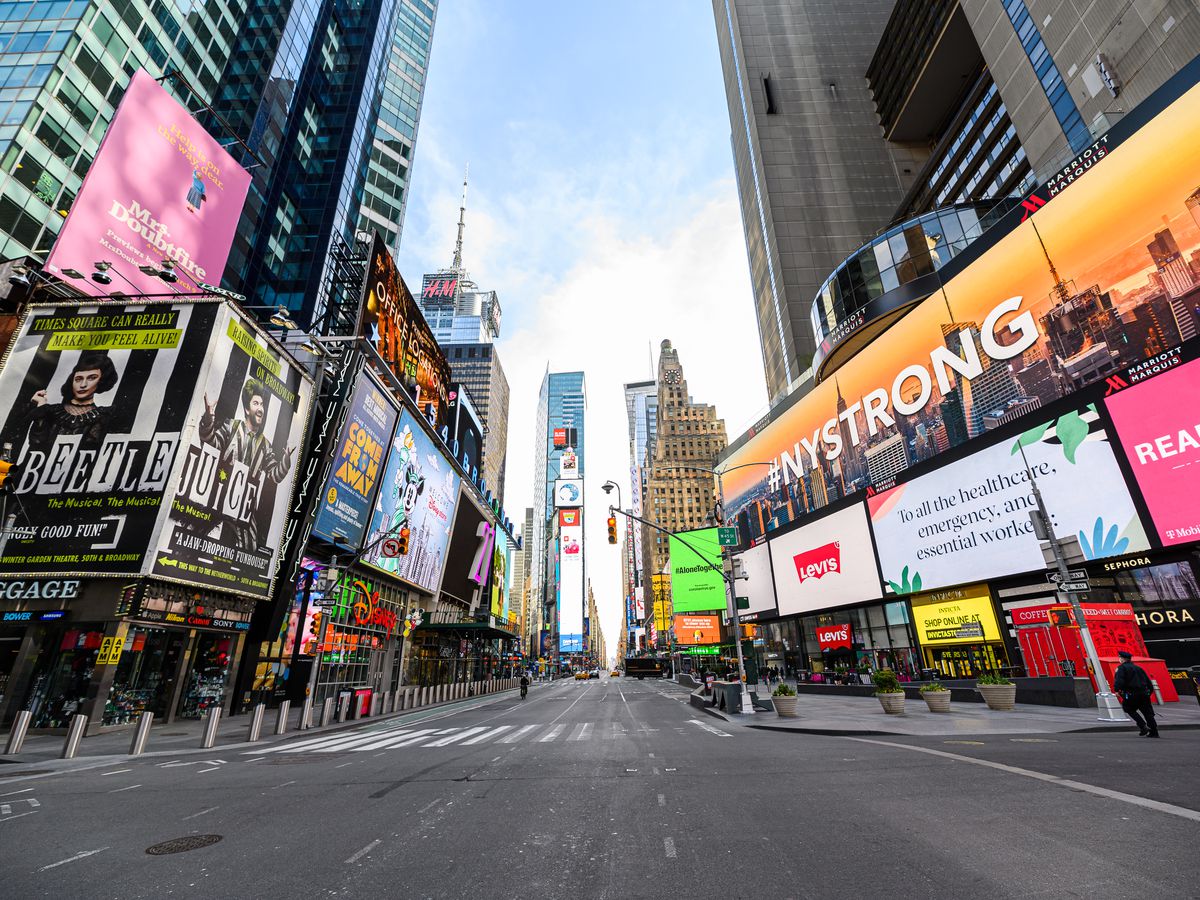
Ever wondered what makes Times Square in New York City such a magnetic spot for tourists and locals alike? Times Square isn't just a crossroad; it's a vibrant hub of culture, entertainment, and history that captures the essence of the city that never sleeps. From the dazzling lights to the iconic New Year's Eve ball drop, there's more to this place than meets the eye. But what are some of the most fascinating facts about Times Square that you might not know? Well, you're in for a treat! We've gathered 35 of the best facts that will give you a whole new perspective on this bustling metropolis corner. Ready to have your mind blown by some of the most intriguing Times Square trivia? Let's dive right in and discover what makes this place truly one of a kind!
Key Takeaways:
- Times Square, also known as "The Crossroads of the World," is famous for its vibrant LED billboards, Broadway theaters, and iconic New Year's Eve ball drop, attracting millions of visitors annually.
- With a rich history and cultural impact, Times Square continues to evolve, embracing sustainability, innovation, and the arts, ensuring it remains a global icon and symbol of hope and renewal.
What Makes Times Square So Famous?
Times Square, often called "The Crossroads of the World," is famous for its vibrant LED billboards, Broadway theaters, and bustling atmosphere. This iconic location in New York City attracts tourists from all over the globe, making it one of the most visited places on Earth.
-
Times Square is named after The New York Times. It got its name in 1904 when the newspaper moved its headquarters to the newly erected Times Building, now known as One Times Square.
-
It's not just a tourist destination; Times Square is also a major center for the global entertainment industry, hosting the annual New Year's Eve ball drop since 1907.
The Evolution of Times Square
Over the years, Times Square has undergone significant transformations, evolving from a humble beginning to the dazzling hub it is today.
-
Originally, Times Square was known as Longacre Square until The New York Times moved there, prompting the name change.
-
The first electrified advertisement appeared in Times Square in 1904, marking the beginning of its transformation into the "Great White Way," a nickname referring to its brilliant illumination.
-
During the 1960s and 1970s, the area experienced a decline, becoming known for its crime and seediness. However, major redevelopment projects in the 1990s revitalized Times Square, turning it into a safe, family-friendly destination.
Times Square's Iconic Events
Times Square is not only famous for its lights and billboards but also for hosting some of New York City's most iconic events.
-
The New Year's Eve ball drop in Times Square is one of the world's most famous celebrations, attracting over a million people each year.
-
Since 1992, the area has hosted "Broadway on Broadway," a free concert featuring musical performances from Broadway shows, drawing thousands of theater enthusiasts.
Fascinating Facts About Times Square
Beyond its fame and bustling atmosphere, Times Square holds numerous fascinating facts that many people might not know.
-
Approximately 330,000 people pass through Times Square daily, with numbers swelling to over 460,000 on busiest days.
-
The cost of advertising in Times Square can exceed $3 million per month for the most prominent billboards.
-
Times Square's NASDAQ sign is the largest LED sign in the world, standing at seven stories tall.
-
Despite its urban environment, a small population of wildlife, including pigeons and sparrows, calls Times Square home.
-
The New Year's Eve ball is a 12-foot geodesic sphere weighing 11,875 pounds and is covered in 2,688 Waterford crystals.
The Cultural Impact of Times Square
Times Square's influence extends far beyond its geographic location, impacting arts, culture, and even the way we celebrate New Year's Eve around the world.
-
It has been featured in countless movies, TV shows, and literature, symbolizing the hustle and bustle of New York City life.
-
The TKTS booth in Times Square, offering discounted Broadway tickets, has made theater more accessible to the public since its opening in 1973.
-
Times Square has inspired similar entertainment districts globally, such as Shibuya Crossing in Tokyo and Piccadilly Circus in London.
The Economic Significance of Times Square
Times Square is not just a cultural and entertainment hub; it's also a significant economic center contributing greatly to New York City's economy.
-
Retail space in Times Square is among the most expensive in the world, with some leases costing more than $2,000 per square foot per year.
-
The area generates over $110 billion in economic activity annually, accounting for 10% of New York City's economy and 3% of the entire state's economy.
-
More than 150,000 jobs in New York City are directly or indirectly dependent on Times Square, highlighting its role as a major employment generator.
Times Square and Technology
Innovation and technology have always been at the heart of Times Square, from its early electrified ads to the modern digital billboards.
-
The first moving sign in Times Square was for a car company in 1917, which used 2,000 light bulbs.
-
Today, Times Square's digital billboards use cutting-edge technology, including real-time social media integration and interactive capabilities.
-
In 2014, Times Square introduced the world's first 3D robotic billboard, adding a new dimension to its advertising landscape.
Environmental Initiatives in Times Square
Despite its reputation for bright lights and high energy consumption, Times Square has made strides in environmental sustainability.
-
Many of Times Square's LED billboards are energy efficient, using less electricity than traditional billboards.
-
The New Year's Eve ball is illuminated by 32,256 LEDs, which consume approximately the same amount of energy per hour as two traditional home ovens.
-
Times Square participates in Earth Hour, an annual event where lights are turned off for one hour to raise awareness about climate change and energy use.
Times Square in Popular Culture
Times Square's iconic status has cemented its place in popular culture, making it a symbol of New York City around the world.
-
It has appeared in over 250 films, including classics like "King Kong" and "Vanilla Sky."
-
Times Square is also a popular backdrop for television shows, music videos, and photography, often representing the energy and excitement of city life.
-
The area's unique blend of art, commerce, and technology has inspired artists and creators for decades, influencing various forms of media and entertainment.
The Future of Times Square
Looking ahead, Times Square continues to evolve, embracing new challenges and opportunities as it remains a global icon.
-
Plans for further development include more pedestrian-friendly spaces and innovative digital installations to enhance visitor experiences.
-
Efforts to increase sustainability and reduce environmental impact are ongoing, with initiatives aimed at further reducing energy consumption and waste.
-
As technology advances, so too will the digital displays in Times Square, promising even more immersive and interactive advertising experiences.
-
The area's commitment to arts and culture remains strong, with ongoing support for Broadway and other live performances ensuring that Times Square remains a vital cultural hub.
-
With its ever-changing landscape, Times Square will continue to be a destination for millions, embodying the spirit of innovation, entertainment, and community that defines New York City.
-
The resilience of Times Square, especially evident during challenging times, underscores its importance not just as a physical location but as a symbol of hope and renewal.
-
As one of the most photographed locations in the world, Times Square captures the imagination of people everywhere, representing the possibilities and excitement of urban life.
-
Ultimately, the future of Times Square lies in its ability to adapt and thrive, continuing to be a place where people from all walks of life can come together to celebrate, reflect, and be inspired.
A Final Stroll Through Times Square
Times Square, with its neon lights and bustling streets, stands as a testament to New York City's vibrancy and resilience. From its early days as a horse trading market to becoming the world's entertainment epicenter, this iconic location has witnessed remarkable transformations. Hosting over 50 million visitors annually, it's not just a tourist destination but a global symbol of culture and commerce. Whether it's the New Year's Eve ball drop, Broadway shows, or its ever-evolving digital billboards, Times Square offers an unforgettable experience. Its history, packed with fascinating tales and monumental events, continues to captivate and inspire. As we've journeyed through these 35 facts, it's clear that Times Square isn't just a place on the map; it's a living, breathing part of New York City's soul, always ready to welcome the world with open arms.
Frequently Asked Questions
Was this page helpful?
Our commitment to delivering trustworthy and engaging content is at the heart of what we do. Each fact on our site is contributed by real users like you, bringing a wealth of diverse insights and information. To ensure the highest standards of accuracy and reliability, our dedicated editors meticulously review each submission. This process guarantees that the facts we share are not only fascinating but also credible. Trust in our commitment to quality and authenticity as you explore and learn with us.


